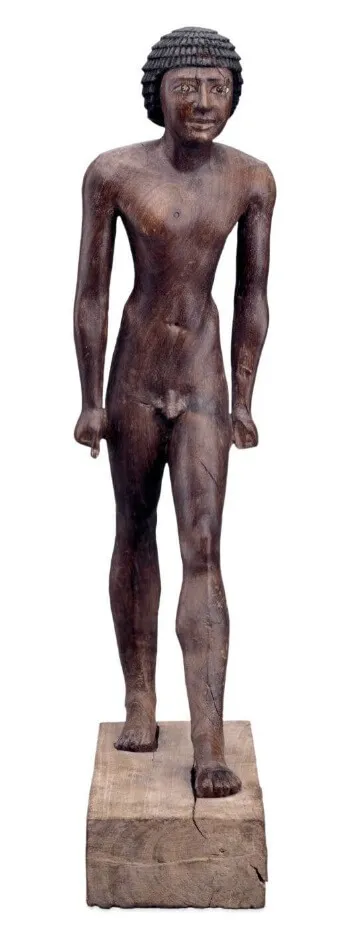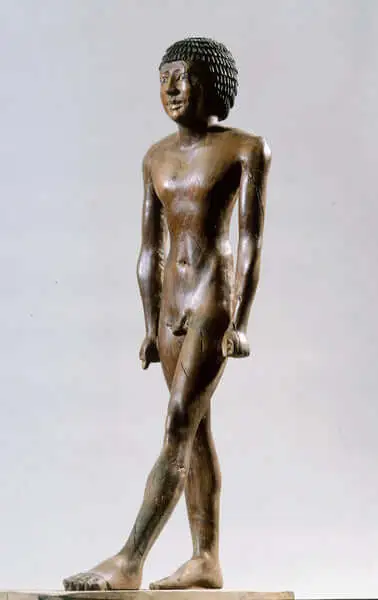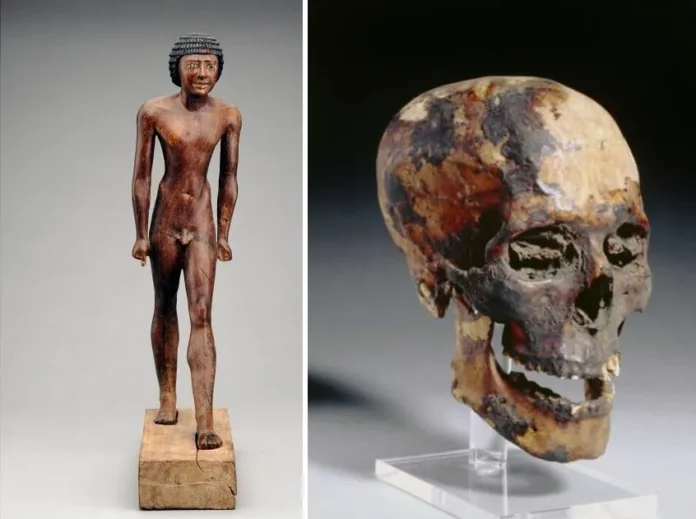Sir Flinders Petrie discovered a human head of a man resting upon a headrest in Sidmant el-Gebel within the Tomb of Meryrahashetef. Petrie identified the mummy as Meryrahashetef of the 6th Dynasty of the Old Kingdom. Meryrahashetef held the titles of “Keeper of the Palace Garden” and “Lector Priest.”
A wooden statue of Meryrahashetef was also found in his tomb at Sidmant, Faiyum. The statue, carved from a single piece of ebony wood, is 58.1 cm tall. Meryrahashetef held the titles of “Sole Companion,” “Keeper of the Palace Garden,” and “Lector Priest.” This statue is part of the British Museum collection (EA55722).

The head (EA55725) is definitely male and is believed to date from the Old Kingdom. There is little flesh or linen left on it, leaving mostly a skeletal skull. The head is currently part of the British Museum collection but is not on display.

Along with the head, the calcite headrest (EA55724) belonging to Meryrahashetef was also found. The headrest is intricately designed, with two human hands with carefully delineated fingers outstretched to support the curved neck rest. These hands emerge from the top of a column that appears to form two arms, which at the lower end turn into two ankles with undetailed feet standing at an angle of 180 degrees along the length of the elongated oval base. The name and titles of Meryrahashetef are incised across the neck rest, down parts of the supporting column, and along one edge of the base, filled with blue paste.

British Museum EA55724
All these artifacts—the head, the headrest, and the ebony statue—were discovered within the Tomb of Meryrahashetef and are part of the British Museum collection.




